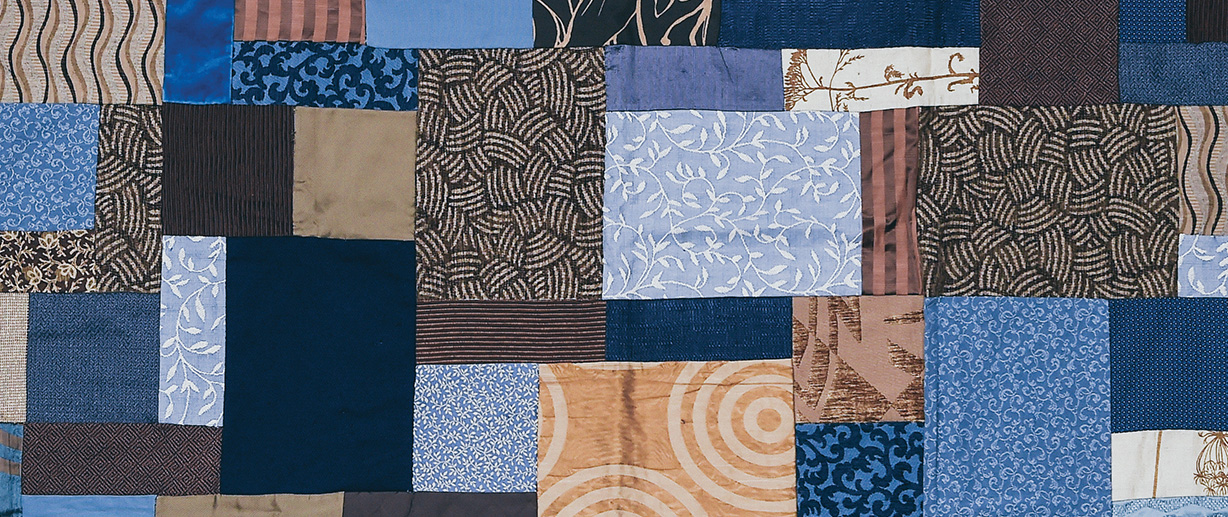Quilts are not simply warm bedcovers. They embody a variety of meanings for the people whose lives they touch, says internationally acclaimed quilt researcher and author Laurel Horton, who has curated an exhibition at Wofford College of quilts from the families of faculty, staff and students.
The exhibition, “Quilted Stories,” was on display through March 21, in the Rosalind Sallenger Richardson Center for the Arts.
“For the maker, the creation of a quilt may serve as an extension of identity beyond their lifetime,” Horton writes in a catalog created for the exhibition. The catalog also describes all of the quilts in the exhibit. “In many cases, quilts provide material evidence of a family’s heritage, but they are not simply heirlooms, like a lamp or a table.”
For some families, quilts are passed down specifically through the female line, Horton points out. Parker Solesbee, a junior psychology major with a minor in music from West Union, S.C., hopes to inherit the “log cabin” design quilt made by her great-great-grandmother, Dora Carson Davis, currently preserved by her grandmother.
The red-and-white applique quilt made by Annie Clementine Kellar Tucker has been passed down through eldest daughter lineage in her West Virginia family. “This has been a popular family tradition in Appalachia and elsewhere,” Horton writes. Rebecca Raulerson Parrish, a 1999 Wofford graduate and now grant specialist in the Office of the Provost, is the current owner. She plans to pass the quilt to her son.
The mother-daughter team of Mildred Alcorn and Diana Alcorn Olencki made two quilts from T-shirts of Charles Weston Olencki, son of Diana and Mark Olencki, class of 1975 and the college’s photographer and digital image manager. The quilts document his participation in tennis competitions, camps and school activities. “This is a modern adaptation of a long tradition of making quilts from clothing,” Horton says.
The quilts passed down to Melissa Clapp, director of library research, education and outreach services for Wofford’s Sandor Teszler Library, tell stories that illustrate the different traditions of her father’s and mother’s sides of the family. The “old fashioned garden” quilt was one of many unfinished quilt tops made by her great-great-grandmother on her father’s side. The maker’s daughter quilted these tops and presented them to her daughters and granddaughters. Clapp, the youngest grandchild, received her quilt as an adult. “In contrast to the open circulation of quilts among the women of her father’s family, those Clapp inherited from her mother’s side became silent reminders of the tragic death of the maternal grandmother she never knew,” Horton writes, “The quilts were made a couple of generations earlier, but those stories remained ‘untold and unknowable.’”
All of the quilts in the exhibition have their own stories, which are shared in the catalog and descriptive cards accompanying the quilts on display.
“A quilt can be said to have a life story, a trajectory from the spark of its conception through the various events and stages of its life,” Horton says. “The lives of quilts are deeply entwined in the lives and relationships of the people who variously create, give, receive, preserve, view or enwrap themselves in them. These quilts may not be the ones that win prizes at the fair or sell for thousands of dollars at auction, but the quilts in this exhibition hold special meaning for the lenders and their families.”
The “Quilted Stories” exhibition is sponsored by the Wofford Cultural Affairs Committee and South Carolina Humanities, a not-for-profit organization that funds, promotes, counsels and coordinates community-building activities in the humanities.
